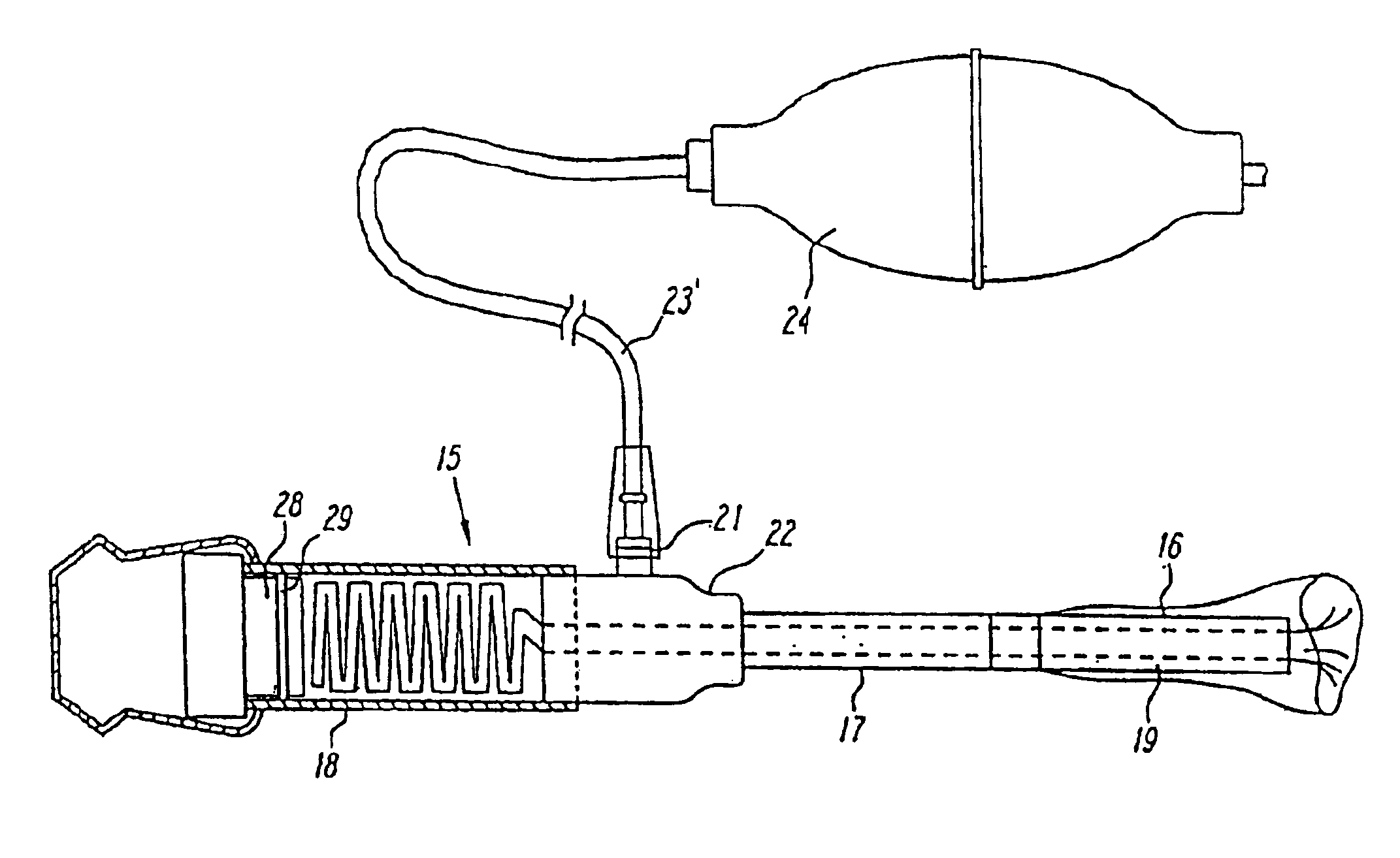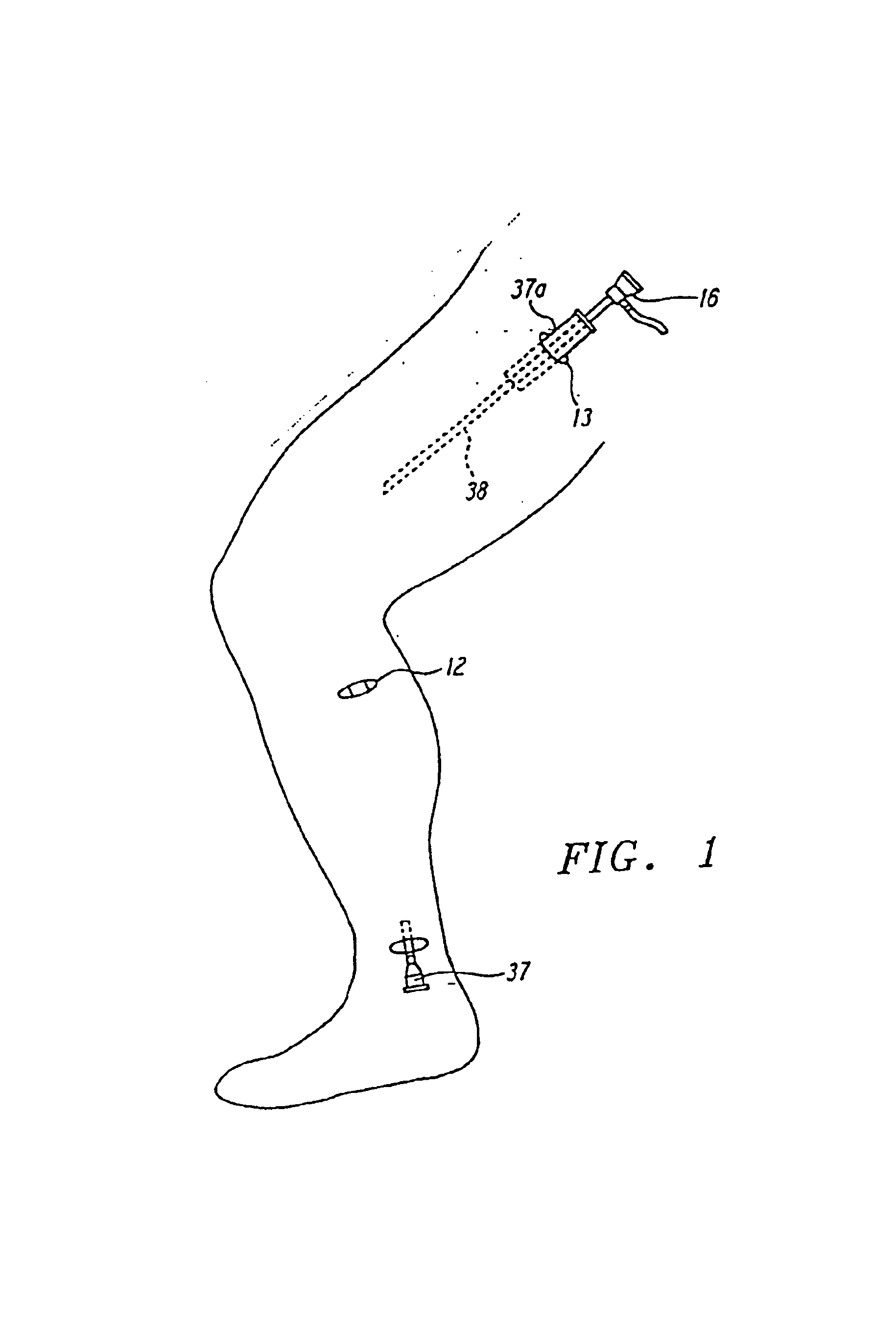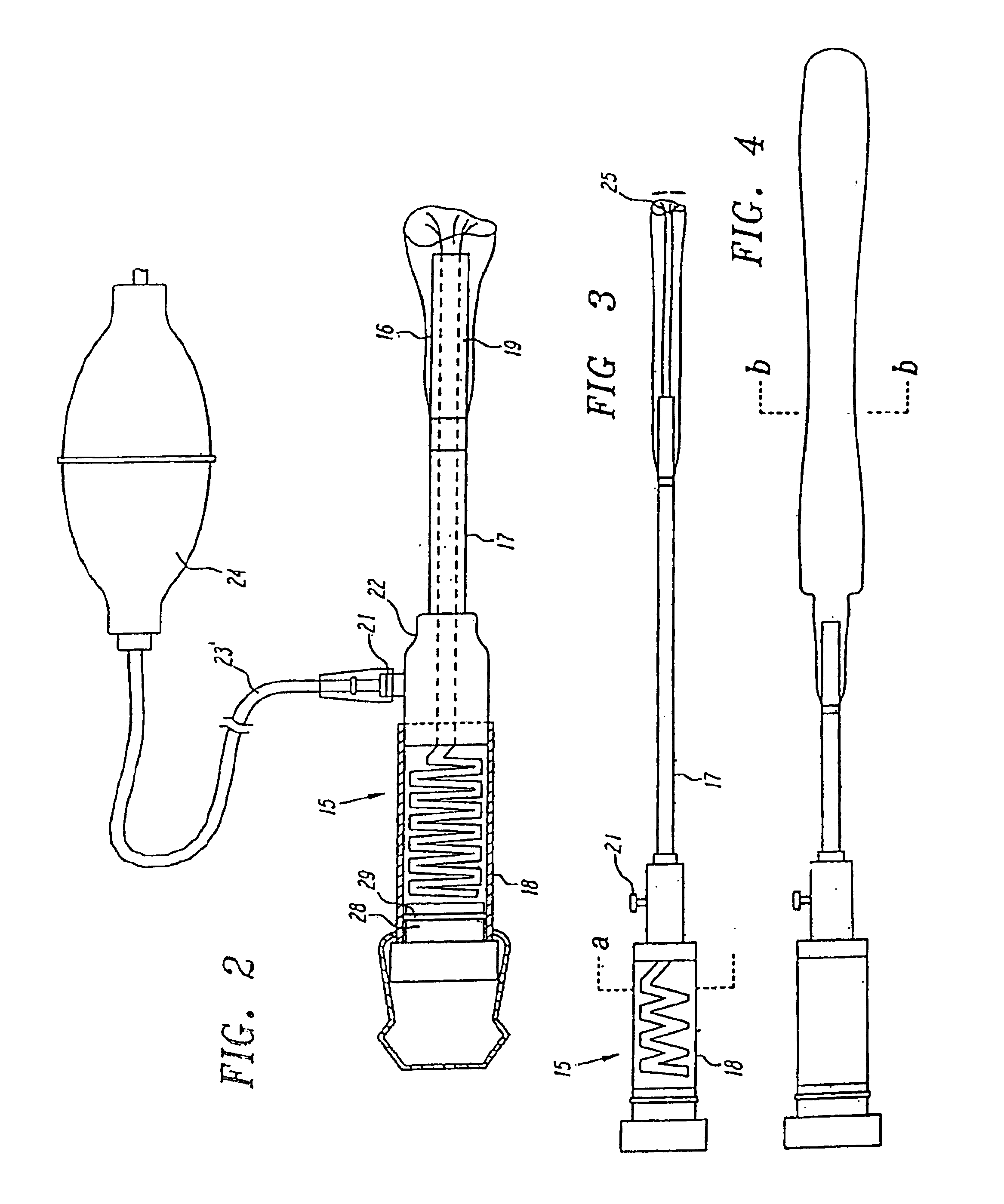Methods and devices for blood vessel harvesting
a technology for harvesting and veins, applied in the field of endoscopic surgery, can solve the problems of long incisions created in the leg, slow healing of long incisions, and inability to remove veins, and achieve the effects of reducing complications, facilitating vein pulling, and reducing incisions
- Summary
- Abstract
- Description
- Claims
- Application Information
AI Technical Summary
Benefits of technology
Problems solved by technology
Method used
Image
Examples
Embodiment Construction
The methods and devices presented herein take advantage of laparoscopic procedures to lessen the trauma of vein harvesting operations. Instead of making an incision along or over the entire length, or essentially the entire length of the vein to be harvested, the procedure may be conducted with only a few small incisions. All that is needed is a working space large enough to allow the surgeon to use the tool and view the operation through a laparoscope. In the preferred embodiment of the method, the surgeon creates a working space under the skin and over the saphenous vein using laparoscopic techniques. The surgeon makes several small incisions to expose the saphenous vein. These incisions are referred to as cut-downs. A distal incision near the knee and a proximal incision at the groin are preferred. If the entire length of the saphenous vein is to be harvested, an additional incision can be made close to the ankle. The saphenous vein can be seen through the cut-downs. It will be a...
PUM
 Login to View More
Login to View More Abstract
Description
Claims
Application Information
 Login to View More
Login to View More - R&D
- Intellectual Property
- Life Sciences
- Materials
- Tech Scout
- Unparalleled Data Quality
- Higher Quality Content
- 60% Fewer Hallucinations
Browse by: Latest US Patents, China's latest patents, Technical Efficacy Thesaurus, Application Domain, Technology Topic, Popular Technical Reports.
© 2025 PatSnap. All rights reserved.Legal|Privacy policy|Modern Slavery Act Transparency Statement|Sitemap|About US| Contact US: help@patsnap.com



